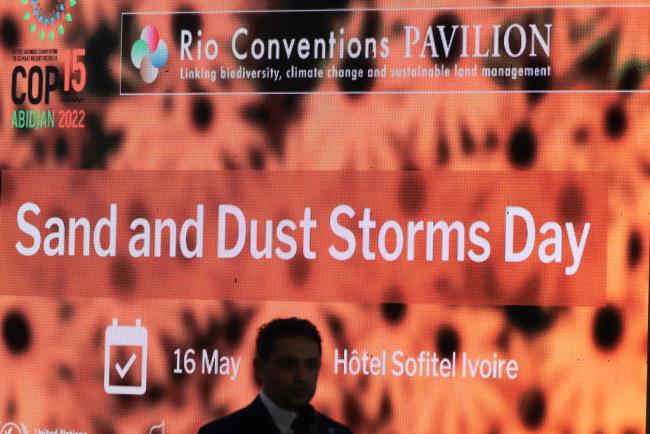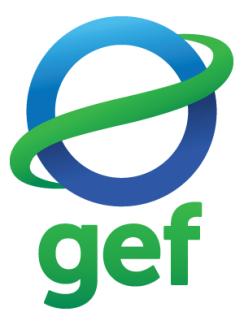With approximately two million tonnes of sand and dust entering the atmosphere each year, sand and dust storms (SDS) present a formidable challenge to achieving sustainable development. They have become a growing global concern in recent decades due to their negative impacts on the environment, health, agriculture, livelihoods, and socioeconomic wellbeing. While they are an essential element of the Earth’s natural biochemical cycles, they are also exacerbated by human-induced drivers including climate change, unsustainable land management, and water use. In turn, they contribute to climate change and air pollution. While their impacts are felt in all regions, sustainable water and land management practices can decrease the impacts of SDS.
SDS mostly occur in dry and desert regions but can transport particles long distances to impact regions much further away, including to other continents. Dust particles circulated by SDS can provide nutrients to marine ecosystems but can also contribute to coral mortality and hurricane formation. SDS can cause respiratory diseases, heart disorders, and eye and skin irritation due to the fine particles they introduce to the body. In addition, agricultural practices and productivity can be harmed by SDS, which can also contribute to desertification processes.
To raise awareness about SDS, Sand and Dust Storms Day was held at the Rio Conventions Pavilion at the 15th meeting of the Conference of the Parties (COP 15) to the UN Convention to Combat Desertification (UNCCD). The day also provided an opportunity for knowledge sharing and capacity development among stakeholders and partners involved in related issues. Representatives from affected countries involved in policy and decision making, implementation, science attended, as did field practitioners and local communities, and members of the UN Coalition to Combat Sand and Dust Storms, which organized the 16 May event and is led by the Food and Agriculture Organization of the UN (FAO) and the UNCCD. Discussion outcomes will provide input to COP deliberations on SDS and other related fora.
The day also sought to: enhance understanding of country needs related to SDS; identify gaps in SDS knowledge and mitigation actions; help integrate SDS into efforts towards land degradation neutrality (LDN); enhance understanding of current SDS mitigation policies and practices; and generate momentum and commitment towards SDS related actions.
More specifically, discussions on sharing knowledge on SDS management addressed:
- adaptation and mitigation, including an economic assessment of SDS in Mongolia, good practices for SDS source and impact mitigation, an introduction to the UNCCD SDS toolbox, and a case study of Botswana land restoration projects towards achieving LDN;
- forecasting and early warning, including the World Meteorological Organization’s (WMO) SDS Warning and Advisory System, SDS warning in Burkina Faso and West Africa, and regional cooperation of SDS monitoring and forecasting in the Gulf Cooperation Council (GCC) region;
- health and safety, including combating SDS with RESILAND CA+, a resilient landscapes program;
- policy and governance, including Nigeria’s SDS plan, sandstorm response systems in Algeria, and addressing SDS impacts in the Middle East and North Africa (MENA) region; and
- regional collaboration, including a regional SDS strategy for Central Asia, transboundary collaboration in Kuwait and Iraq, and an SDS risk assessment in Asia and the Pacific.
A high-level interactive dialogue discussed the UNCCD SDS Compendium and a concept note on combating SDS to enhance food security and achieve LDN. A panel discussion included representatives from Mexico, Uzbekistan, UN-Habitat, the UN Framework Convention on Climate Change, the UNCCD’s Global Mechanism, and FAO.
An SDS training session on building resilience had teams of participants collaborate over exercises on: the impact of SDS on lives and society; SDS forecast and monitoring systems at the global and national levels; early warning for SDS; and reducing SDS through source management and LDN-based options.
The Rio Conventions Pavilion is taking place from 10-18 May on the sidelines of UNCCD COP 15 in Abidjan, Côte d’Ivoire.
All ENB photos are free to use with attribution. For Rio Convention Pavilion events during UNCCD COP15, please use: Photo by IISD/ENB | Matthew TenBruggencate.
To receive free coverage of global environmental events delivered to your inbox, subscribe to the ENB Update newsletter.
Select photos

The recently released Sand and Dust Storm Compendium is available in multiple languages.

Valeria Cruz Blancas, Mexico; Abduvokhid Zakhadullaev, Uzbekistan; Ameera al-Hassan, UN Habitat, Motsomi Maletjane, UNFCCC; Louise Baker, UNCCD GM























